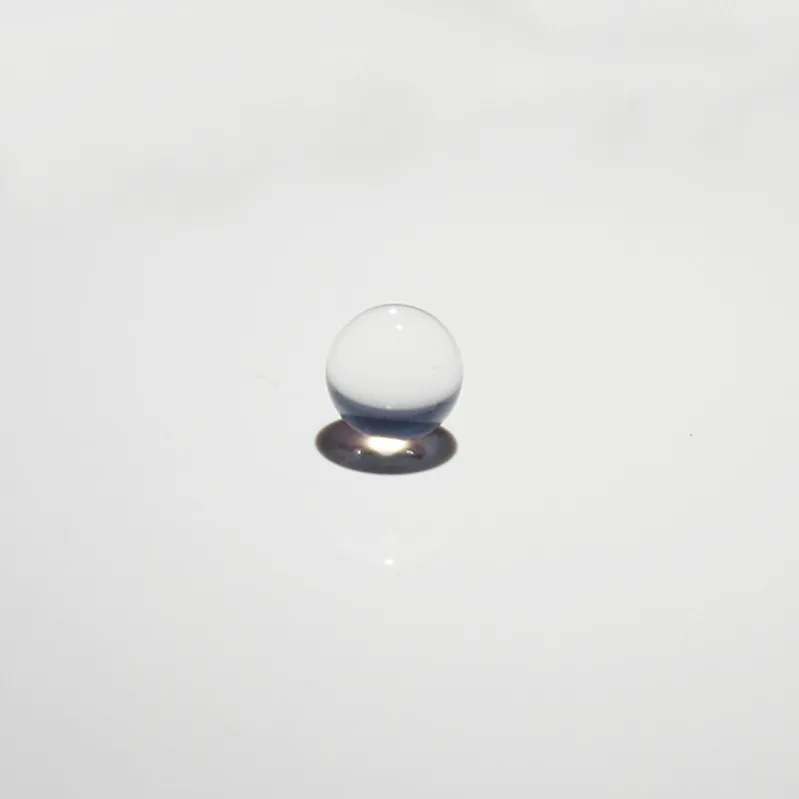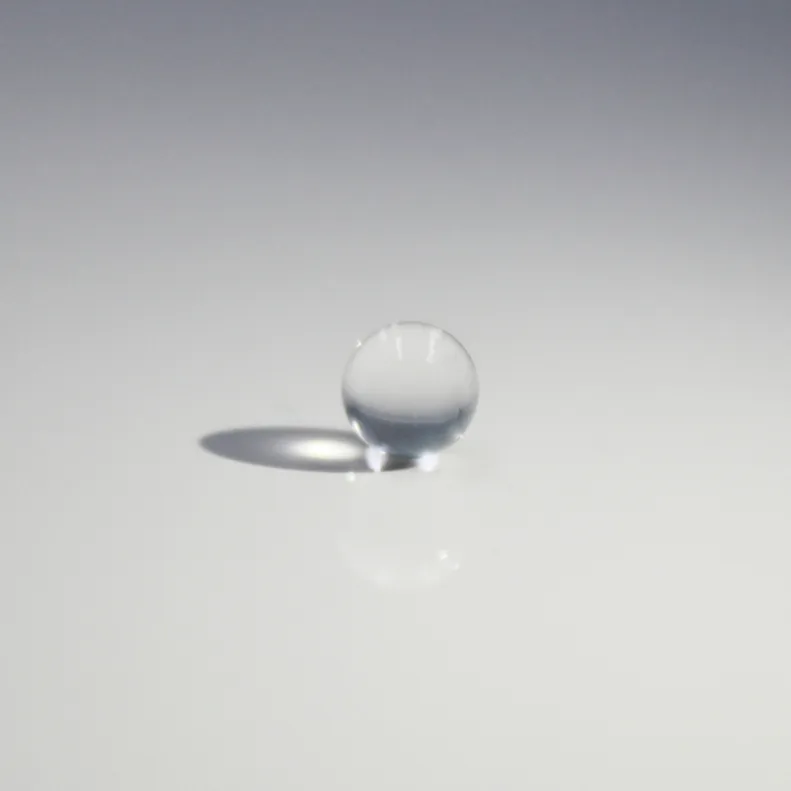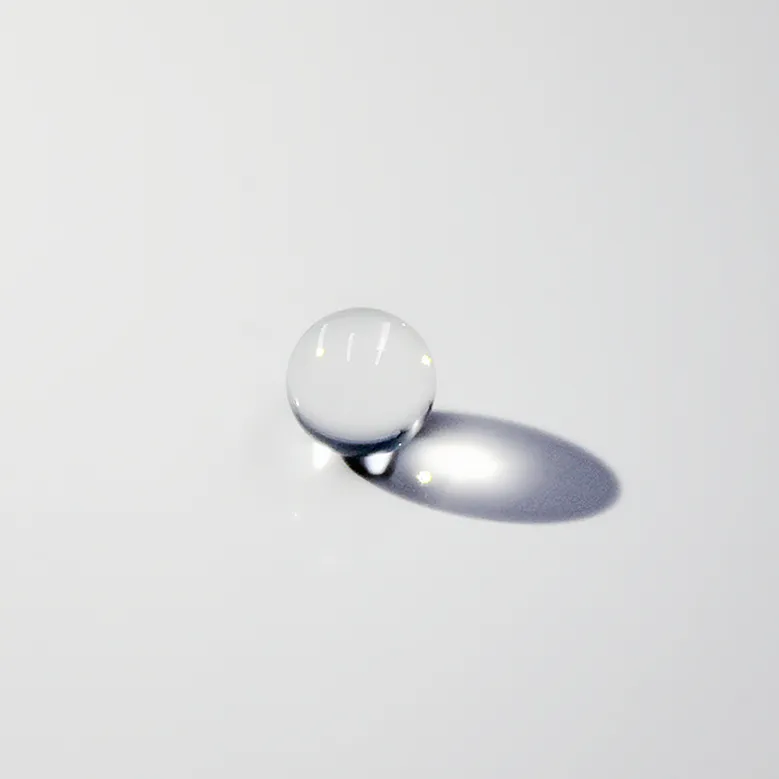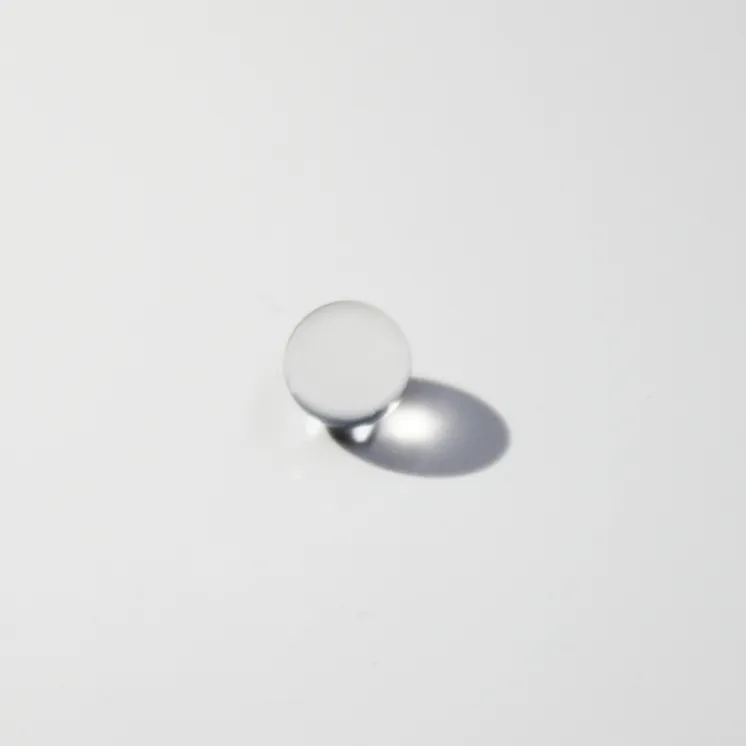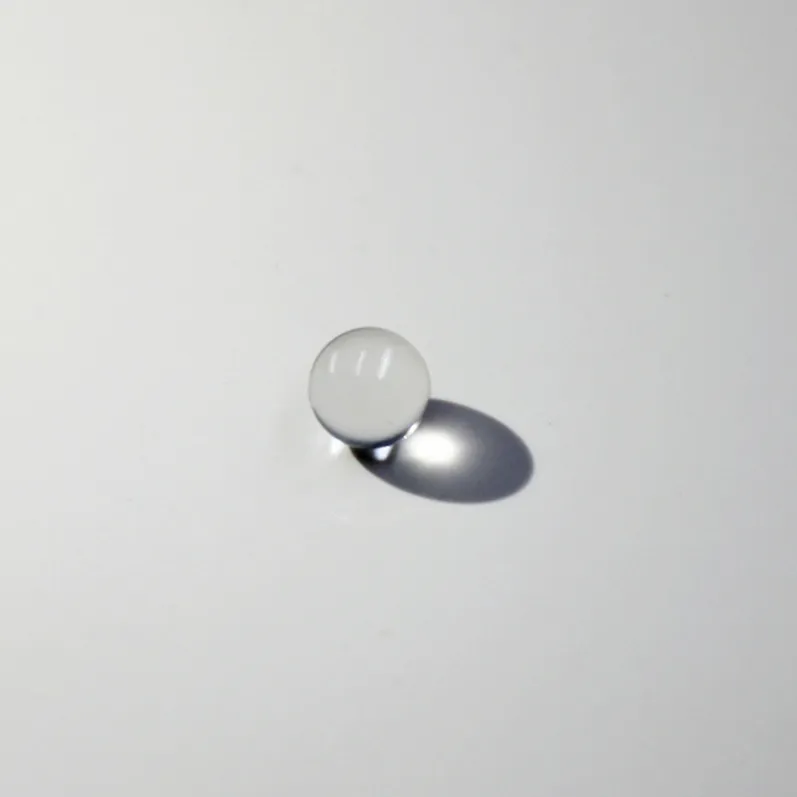Ball and half ball lenses
Diameter: 0.50mm-150mm
Tolerance: 0.001-0.003
Sphericity: 0.001
Surface Quality: 20-10 or better
Coating: Optional
Ball Lens consists of a highly transparent spherical ball, usually made of solid glass (fused silica) or another optical material。 Most ball lenses are made with small diameters – a few millimeters or even less than a millimeter. The optical physics can be understood by realizing these lenses are, equivalently, two plano-convex lenses separated by a parallel plane.
Ball Lenses are commonly used to improve signal quality in fiber coupling applications, or for use in endoscopy or bar code scanning applications. Our ball lenses feature short back focal lengths to minimize the distance needed from the ball lens to the optical fiber.
Ball lenses are also used as beam collimators for optical fibers and to improve signal coupling between emitters, detectors, and fibers. They have a high coupling efficiency and are easy to align. A single ball lens is used to couple a laser beam to an optical fiber, while two ball lenses are used to couple two optical fibers.
Other applications include objective lenses for endoscopy or optical sensors, and in the miniature optics used for barcode scanning.
Spherical aberration is inherent in all ball lenses, but becomes a problem if light propagation isn’t restricted to a small fraction of the lenses cross-section. The ratio of the diameter of the ball lens and the diameter of the input source is denoted as d/D, and when this number increases, the focus spot size at the back focal length of the lens also increases.
1) Ball lenses that our factory produce normally, we could also manufacture as per your special requirement.
* Diameter: 0.50mm-150mm
* Diameter Tolerance: +/-0.001mm-0.003mm
* Sphericity: 0.001
* Surface Qaulity: 80/50 – 20/10
2) Selecting a Ball Lenses for Fiber Optics Coupling
* For laser to fiber coupling, the numerical aperture of the ball lenses must be less than or equal to the numerical aperture of the fiber. The spherical lenses can be placed a distance of the back focal length in front of the fiber in order to transmit the coupling light from laser to fiber.
a. For instance, if you were working with optical fiber with a numerical aperture of 0.22 you would need a ball lens of no more than 0.22 numerical aperture.
b. If you wish to couple two fiber optics, you will want to use two identical ball lenses. These can be placed in sequence between the fibers, with each lens a back focal distance from the fiber closest to it.
3) Materials Used for Ball Lenses
* The most common materials used in ball lenses are K9 glass, UV grade fused silica, sapphire, SF11, Ruby, BK7 etc..
a. UV grade fused silica can be used for UV, VIS, and NIR applications, and is a stable substrate with a low coefficient of thermal expansion.
b. BK7, a boro-crown glass, has an index of refraction of about 1.51 and is often used for visible light;
c. Sapphire glasss has a cost premium but does also provide better optical transmission. It is suitable for UV and IR applications.

Our Ordering Process
Send us your request with detailed specifications
Receive a commercial offer with terms and costs
After your approval, we handle manufacturing, quality control, and shipping
📦 Shipping
3-5 days in EU, from 10 days to USA
💳 Payment methods
Cash, Bank Transfer, Cards (Visa, Mastercard, Amex, Discover) and PayPal
💬 Questions?
Contact us via WhatsApp, phone, live chat or email
